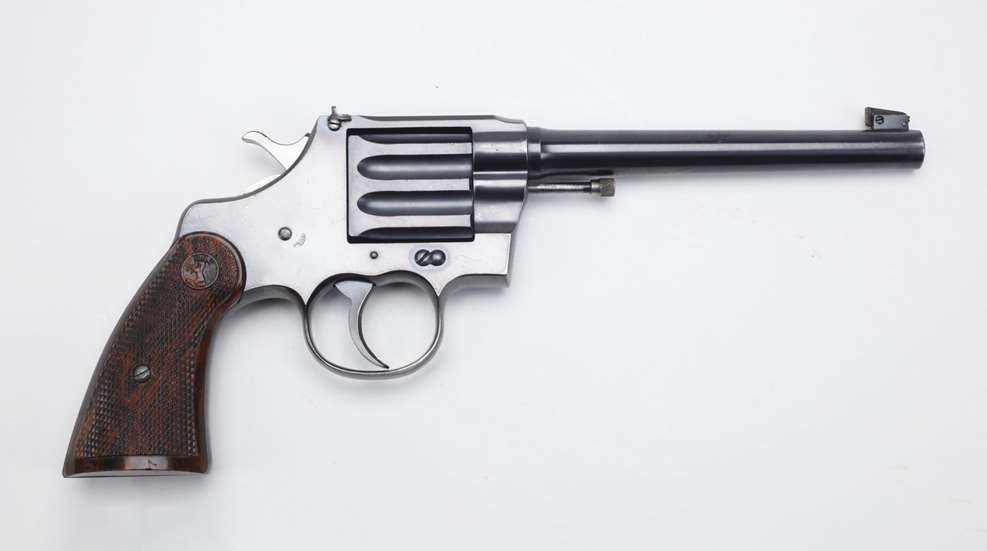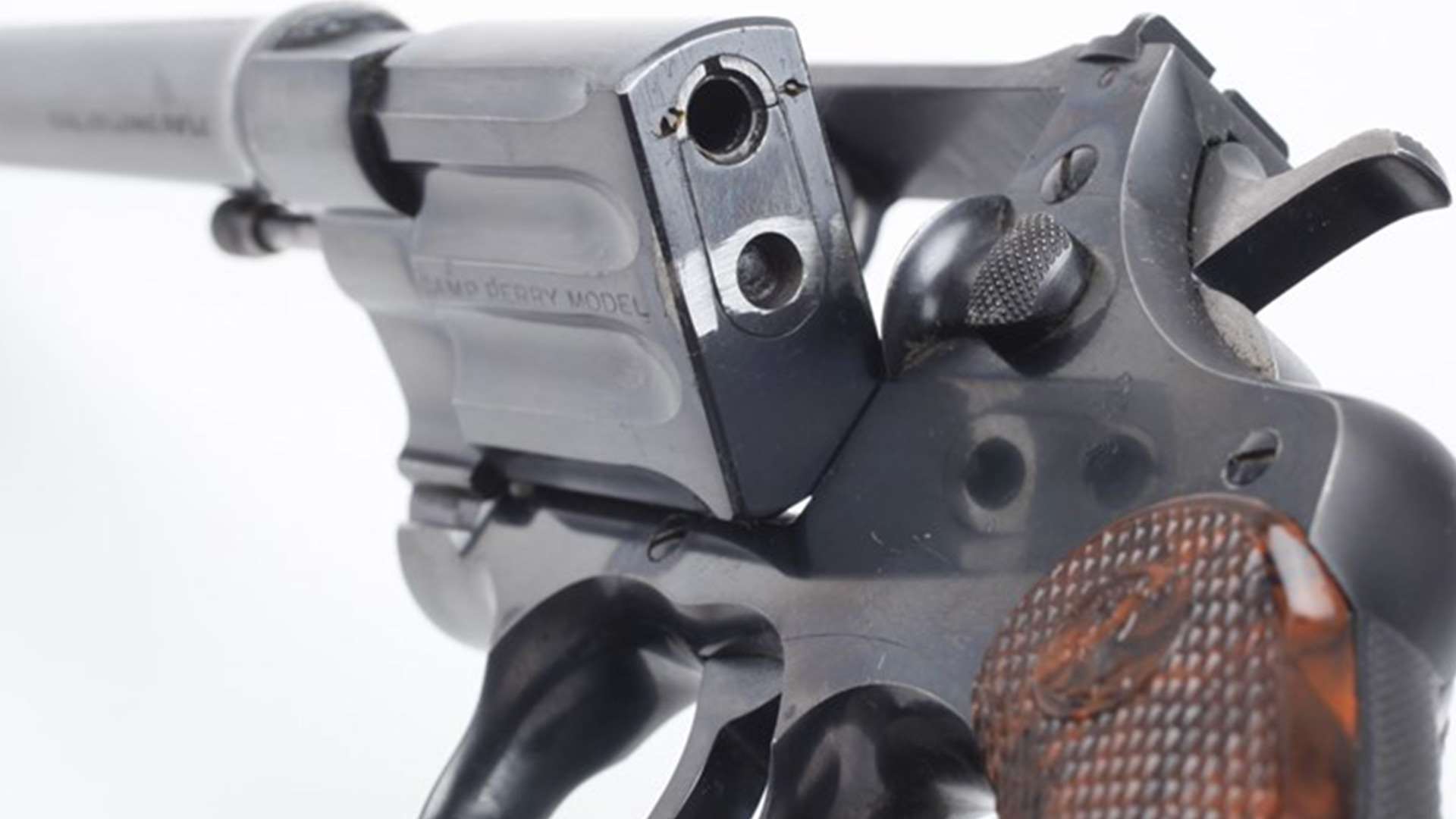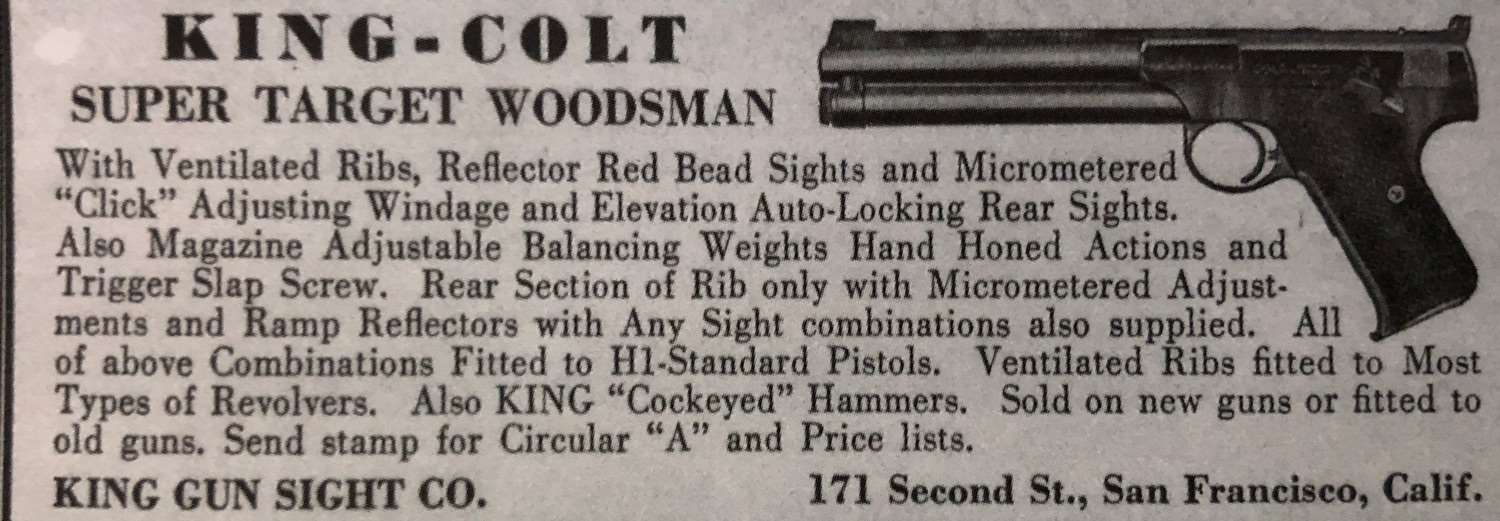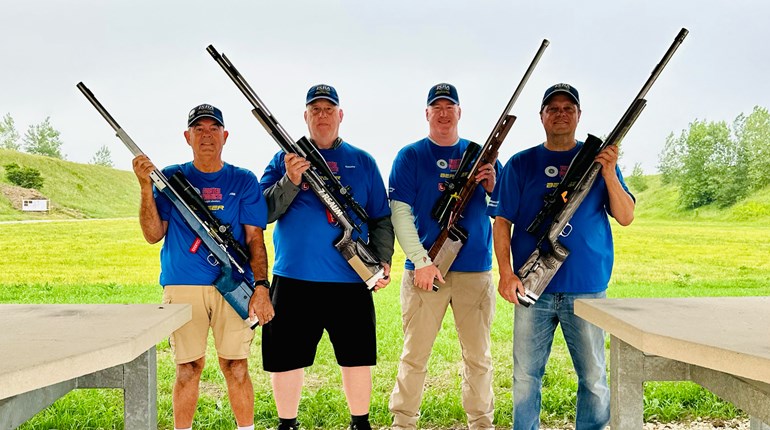
Prior to 1918, the NRA's interest in pistol competition was primarily as a complement to pistol competition conducted under the auspices of the National Board. The World War I experience, however, brought a change in attitude concerning pistols that was similar to the ascendancy of the bolt-action rifle. Returning veterans who had trained with the pistol wanted to maintain their collective proficiency. They wanted to shoot the pistol in competition. The National Board was happy to oblige. So, increasingly, was the NRA.
In the early years, the New Jersey State Association had conducted a busy pistol program as part of the matches fired at Sea Girt. That program did not accompany the move to Camp Perry, but it did resurface at Caldwell in 1919—seven individual and team pistol matches that included a special match pitting military against civilian teams (the civilians won). And, at Camp Perry in 1920, matches were fired and champions named that were new and destined to endure. Marine Gy./Sgt. J.C. Thomas won the first NRA Pistol Championship Match; a team from the Philadelphia, Pa., Police won an NRA Police team match; the Marines won the NRA's [Pistol] Team Trophy and then earned added accolades by winning the first National Trophy Pistol Team Match.

The pistols (and revolvers) of that era were not exciting—except to shooters of the day and today's collectors. Until the 1920s, an individual who bought a handgun, bought it and shot it. Both Smith & Wesson and Colt offered revolvers that were adapted to target shooting. The .38 Military & Police Target model was introduced in 1899 and the company followed up with the first of its .22/.32 Target models (built on the "I" frame) in 1910. Smith & Wesson also offered single-shot target pistols—in .22 caliber—beginning with the First Model of 1893 and running through the "Straight Line"—made from 1925 to about 1936. Likewise, Colt offered its New Police Target beginning in 1897. The Colt Police Positive Target revolver, in .22 caliber, went on sale in 1910. Colt revolvers, chambered for the . 38 Special, fitted with adjustable sights, and marked "Officers Model" went on sale about 1906. These revolvers were made through the production of the Army Special and Official Police models until 1930, when the purpose-built "Officers Model Target" with a heavier barrel and adjustable sights was introduced. Colt's "Camp Perry Model"—a single-shot built on the Army special frame—was made from 1920 to 1940. (See the Colt Camp Perry Model in the photo at the top of this article.) And, all of these target revolvers were "off-the-shelf" guns. The "aftermarket" market began to develop in the late 1920s, and like so many other facets of target shooting, had its heyday in the years roughly from 1930 to 1960.
Meanwhile, there was a groundswell of appreciation for the .45 Automatic. It wouldn't mature until much later, but it began in 1921 with the publication, in Arms and the Man for March 1, of an article entitled "The Red-Headed Stepchild." In "Stepchild," author T.C. Barrier suggested that the M1911 pistol would make "a much better target [pistol] than 90 percent of the hair trigger revolver cranks will give [it] credit for being." Barrier did point out that the sights were hard to see, even when the shooter had good eyesight. And he noted that the issue trigger pull can be a big daunting. But, in defense of the pistol, Barrier stated his conviction that an unaltered M1911 ought to be good for scores in 80s, and he put forth the notion that 90s were not beyond possibility. He also maintained that someone who knows what he is doing could get a .45 trigger down to about a 4-pound pull without sacrificing safety. Of course, in the intervening 100-plus years, sights have been improved, a well-tuned .45 will shoot the middle out of the 25-yard X-ring, and ways have been devised of getting a .45 trigger below four pounds—without sacrificing safety. But Barrier's article marked a beginning—of appreciation, at least.
The next entrant was a chap named "Albertson." Albertson worked out of Lewes, Del., and in 1925 advertised Colt .45s with "hand honed and finished, adjusted trigger pulls; gold bead front sights, and 'hand-full' grips," all for $47.50. Since a Colt .45 cost $36.75 in 1925, one must suppose that Albertson's fee included the pistol. Albertson's .45s should not have been authorized for use in National Trophy matches—not with "gold bead front sights and 'hand full' grips"—but the times were more attuned to the year in which Ben Comfort shot the President's (a service rifle match) with a scope-sighted 1917 Enfield than to 1905, when revolvers with 6½-inch barrels were prohibited.
After Albertson—who also sold a neat little receiver sight for the Model 1903 Springfield—came J.M.B. Beecher of East Orange, N.J. The April, 1930 issue of American Rifleman included an advertisement placed by Beecher, for "real adjustable rear sights" for the .45 Automatic and .38 Super. And close on Beecher's heels came King's Gun Works.

D.W. King, of San Francisco, Calif., known both as King's Gun Works and King Gun Sight Co., began around 1930 by fitting aperture rear sights to revolvers. Like Albertson, King got a start by making a sporting replacement for the military rear sight moveable base of the Springfield, and branched into handgun sights. By the mid-1930s, he made "Red Bead" and "Ramp Reflector" sights for revolvers, replacement adjustable sights for Colt M1911 NM and Colt Ace pistols, add-on weights for Woodsman and High-Standard pistols, and add-on vent-rib and sight assemblies for revolvers. King's Gun Works sold match-conditioned Colts and High Standards with ribs, adjustable sights, variable barrel weights, trigger stops and "hand-honed" actions. King's last offerings for the decade prior to World War II were custom grips and offset hammers (called the "Cockeyed Hammer," and with a patent application on file).
Revolver mechanisms, too, got a share of attention. Out in Los Angeles, J.D. Buchanan, who advertised his efforts as the "finest custom Pistol and Revolver work in America," offered a short-action conversion for both Colt and Smith & Wesson revolvers and "skeletonized" hammers that promised to speed hammer fall by simply lightening the hammer. In 1936, the Buchanan, short-action modification cost $10. Buchanan did accuracy tuning on the .45 Automatic, too.
Gunmakers began to post serious new entries in the target handgun field in the 1930s. Smith & Wesson announced its first-model K-22, in 1930, adding the K-32 in 1938. Colt introduced its Officers Model Target revolvers, both .22 and .38 Special in 1930 (the .32 version came later) and the National Match .45 Automatic in 1933; and continued to advertise target versions of the Woodsman—which had been around in one form or another since 1915. The Match Target Woodsman debuted in 1938. Both Harrington and Richardson and Iver Johnson made very serviceable, mid-priced target revolvers (the H&R ".22 Special" and the Iver Johnson "Supershot") and H&R marketed its highly regarded USRA .22 caliber single-shot beginning in 1928. Finally, High Standard entered the market in the early 1930s with its series of "Hi Standard" pistols, easily adapted for target shooting and superbly accurate, probably due to the efforts of ace barrel maker Eric Johnson.

With the advent of factory-built match semi-automatic pistols came the entry of another group of individual—the custom pistolsmiths. In the 1930s, they included Frank Pachmayr, Buchanan and King on the west coast, and A.E. Berdon, who, in the 1930s hung his hat in Yellow Springs, Ohio. Berdon was a graduate engineer with a background in automotive research and production management. He got into custom gunsmithing, on a part-time basis, with what he called an "Anti-Slap Trigger Device." It was a counterbalance for the trigger spring that, at the point of release, applied an impulse to the trigger equal to the weight of the pull, and it worked—so well that Berdon secured a patent on it. Cost was $3, plus installation if Berdon did the job. The Anti-Slap Trigger Device was made for revolvers and pistols and was adapted for use on rifle as well. After he retired, Berdon moved to Lakeland, Fla., and went into pistolsmithing full time. He worked on Colt Woodsman and High-Standard pistols and on revolvers, but his specialty was accuracy jobs on the .45 Automatic. Berdon pioneered many of the processes by which today's pistolsmiths tune a .45 Automatic—uniform lockup, a close fit between the sides of the ejection port and the rear of the barrel, correct fit between slide and frame, and, of course, superb triggers. He was above all a craftsman and his guns earned a reputation for accuracy, reliability and long service life.
And last, but not least, everybody made target grips. Best known were Walter Roper, Pachmayr (doing business as Fray-Mershon) and Lew Sanderson, but folks like John Blake, in Park Ridge, N.J., made thumb-rest grips for High-Standards, Pointer Stocks for High-Standards, and for the Woodsman came from Southwest Cutlery in Montebello, Calif.; and Holman Aluminum stocks for the Woodsman were sold by Thurman Randle of Dallas, Texas. By the start of the 1940s, the custom target pistol business was beginning to blossom.
And then, on December 7, 1941, everything changed when the Japanese attacked Pearl Harbor.
See more: A Page From History: The 1991 National Matches


































